The Magic of the Sahara Desert
Welcome to Morocco’s Desert
There are few places on Earth as awe-inspiring and soul-stirring as the Sahara Desert. Spanning eleven countries and nearly the size of the United States, it is the world’s largest hot desert, and Morocco holds some of its most breathtaking corners. Here, golden dunes rise like waves on a silent sea, ancient caravan routes snake through arid plains, and starlit skies stretch endlessly above the horizon.
The Sahara is more than just sand. For centuries, it has played a vital role in shaping Moroccan identity. Once a major hub for trans-Saharan trade, the desert connected West Africa with North Africa and Europe, allowing for the exchange of gold, salt, spices, and stories. The nomadic Amazigh (Berber) communities who have long called this region home continue to preserve their rich oral traditions, music, and way of life.
The Sahara’s natural wonders are just as captivating as its human history. Towering dunes in Erg Chebbi and Erg Chigaga shift daily with the wind, creating otherworldly landscapes. Rare desert wildlife like fennec foxes and monitor lizards make their home here, while sudden oases spring to life, nourished by ancient underground aquifers. And when night falls, the desert reveals its most magical trait — an unparalleled view of the Milky Way, unspoiled by artificial light.
A journey into the Moroccan desert feels like stepping into another realm — vast, quiet, and timeless.
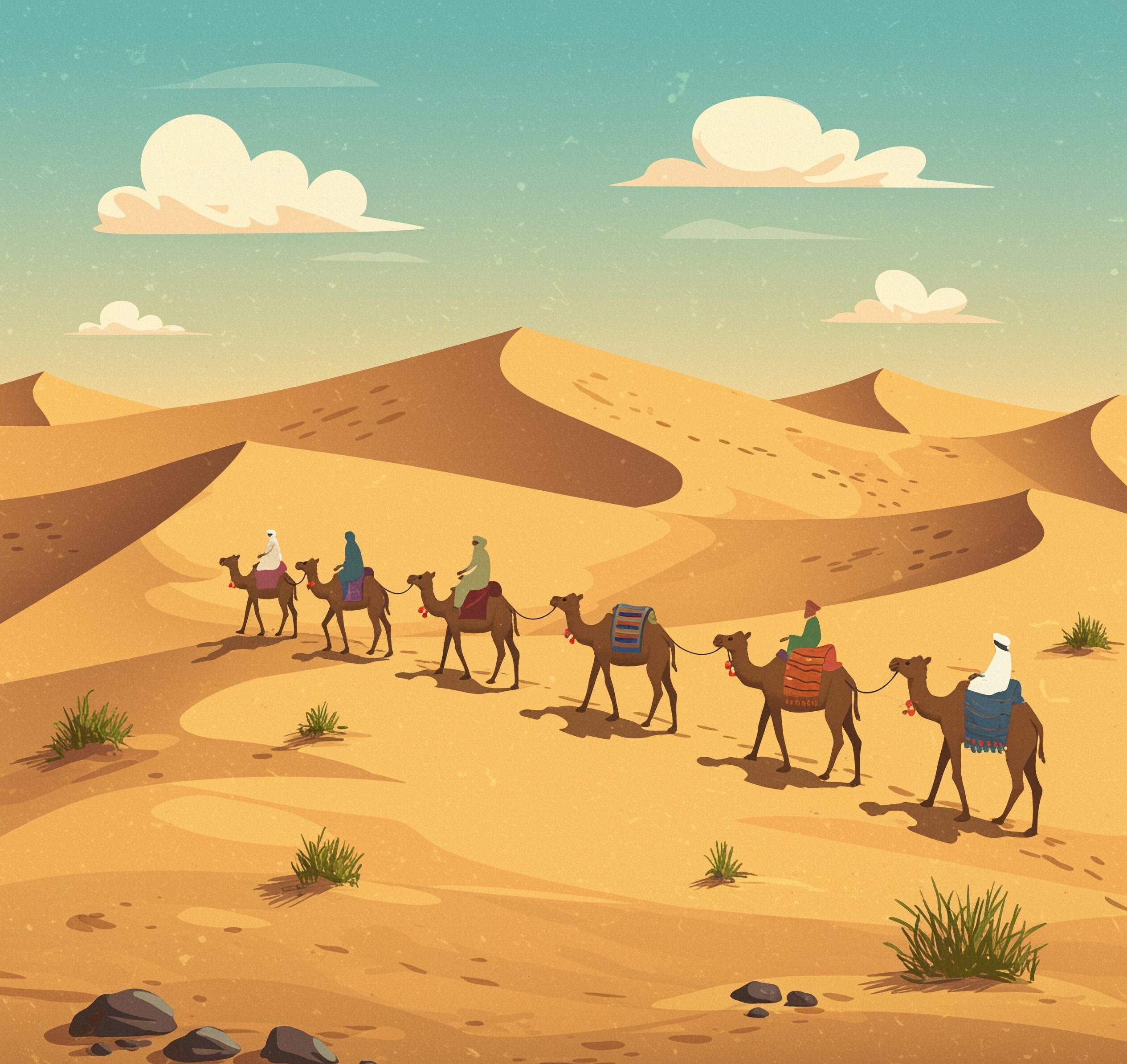
Let’s explore the history, mystery, and majesty of Morocco’s Sahara Desert.
Ever-changing naturescapes
While the Sahara may appear timeless and still, it’s a landscape in constant motion. The Moroccan Sahara is home to some of the most striking natural phenomena in North Africa, from towering sand dunes that reshape themselves with the wind to hidden oases that pulse with life in an otherwise arid world.
The most iconic sights are the ergs, vast seas of wind-sculpted sand dunes. Erg Chebbi near Merzouga and Erg Chigaga near M’Hamid are two of the most famous. These golden giants can reach up to 150 metres in height and seem to glow at sunrise and sunset, shifting from deep orange to pale gold with the movement of the sun. No two visits to the dunes are the same. The landscape is continually transformed by wind, creating ripples, ridges, and shadows in an ever-changing desert canvas.
Despite its harsh climate, the Sahara also shelters unexpected life. Seasonal oases appear where underground rivers rise to the surface, supporting clusters of palm trees, desert shrubs, and small ecosystems. These pockets of green are vital stopovers for migratory birds and wildlife. Look closely and you might spot fennec foxes, desert hedgehogs, or the elusive desert monitor lizard, each uniquely adapted to survive the intense heat and dry conditions.
And when the sun goes down, the real show begins. Free from light pollution, the night sky in the Sahara is a natural planetarium. The Milky Way arcs across the sky, and shooting stars are a regular spectacle. It’s no wonder many travellers say the Sahara by starlight is one of the most magical experiences of their lives.
In the Moroccan Sahara, nature doesn’t just exist — it performs.
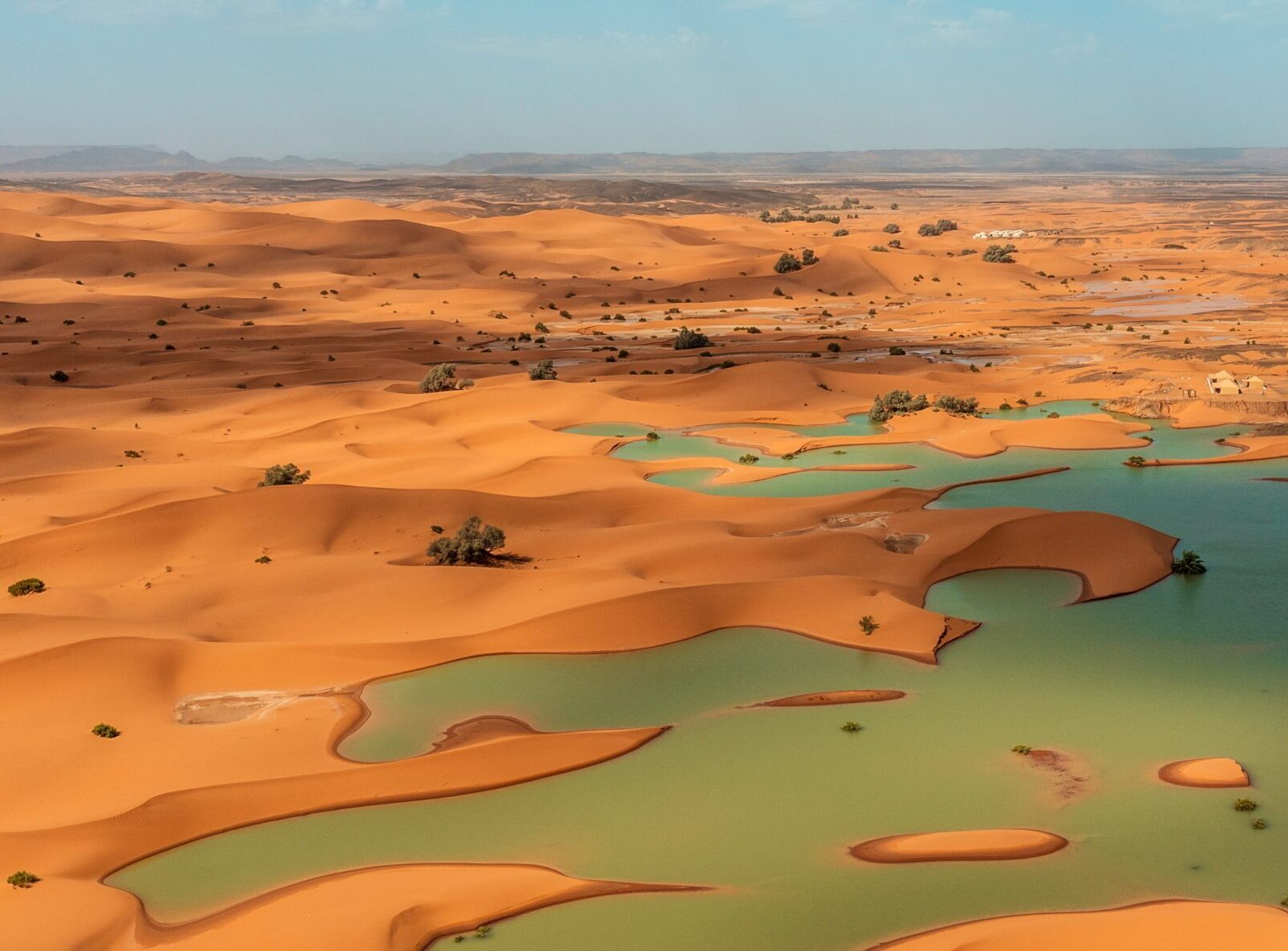
Keepers of the Desert: The Berber People
Long before Morocco became a kingdom, the Berbers, or Amazigh (meaning “free people”), lived across North Africa, including the vast stretches of the Moroccan Sahara. As the region’s original inhabitants, their history in the desert spans millennia, deeply rooted in the rhythms of nature, oral tradition, and communal living.
In the Sahara, Berber life has long been shaped by the harsh but beautiful environment. Many Berber communities were nomadic or semi-nomadic, moving with the seasons, herding livestock, and establishing trade routes across the dunes. Their resilience, ingenuity, and knowledge of the desert’s moods allowed them not only to survive, but to thrive.
Berber culture is expressed through vibrant textiles, silver jewelry, pottery, music, and storytelling. Their language, Tamazight, remains widely spoken, and you’ll see their distinctive geometric patterns and symbols in everything from rugs to architecture. Hospitality is a cornerstone of their identity. Offering tea, shade, and stories to travellers is both custom and pride.
Today, while many Berbers have settled in villages or towns, their cultural legacy remains deeply tied to the desert. Read more in our Morocco Dream Magazine.
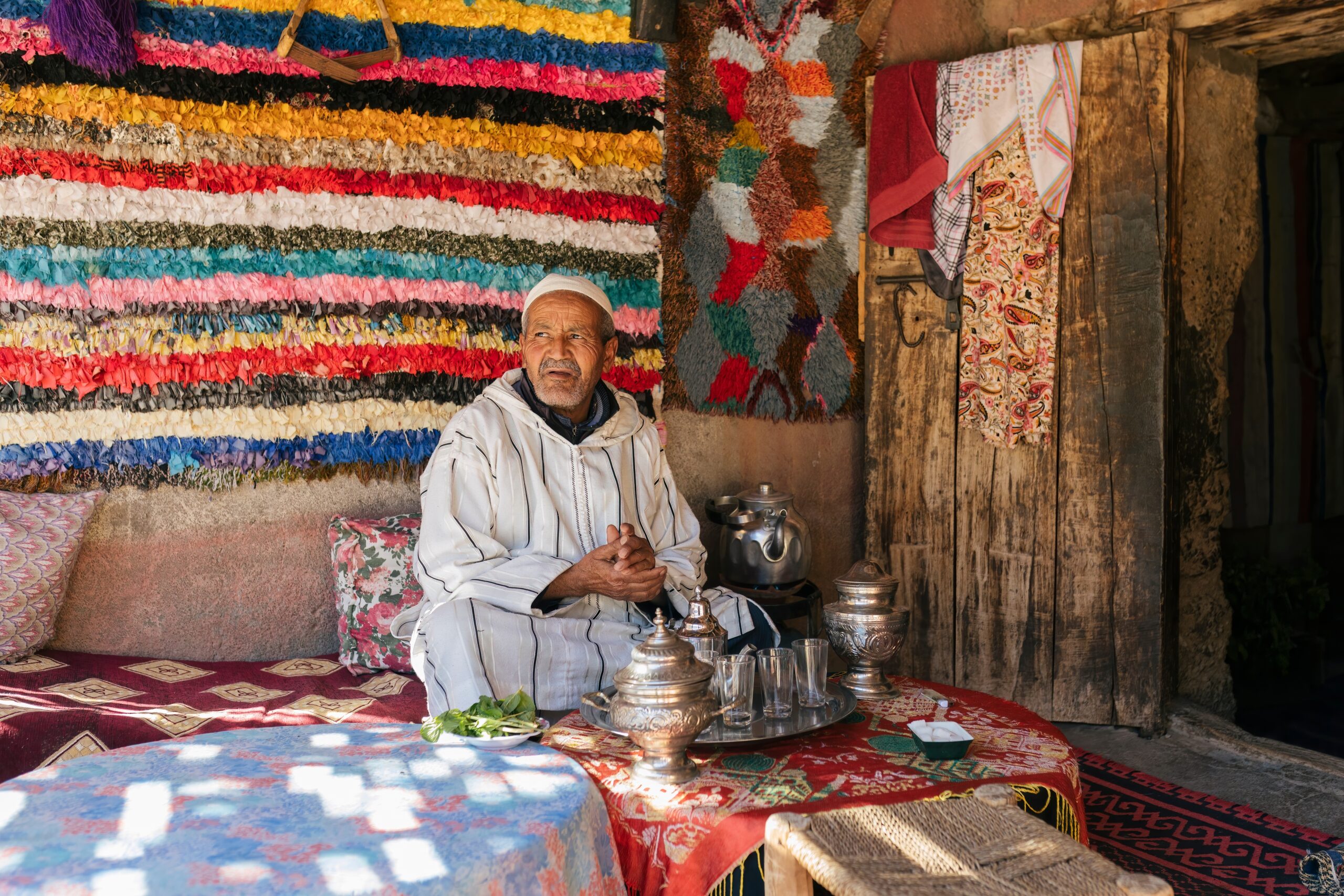
The best way to get swept away in the beauty of the Sahara…
Spend a night under the stars
Picture yourself surrounded by endless sand and stillness as the sun begins to set. The temperature changes and the sky turns to impossible colours. While the days can be hot, nights can be surprisingly cold, so pack layers to stay warm. The night comes, and millions of stars fill the clear desert sky; a view of the cosmos that could rival any you’ve ever seen before.
Off in the distance, the dunes slope into a valley. There’s a camp of large Berber tents, traditional rugs, and a warm fire. Delightful aromas waft in your direction as your hosts prepare you a warm meal. While you eat, the rhythmic beats of traditional drumming echo through the night air. The food is delicious and your tent, surprisingly luxurious. Beneath the unpolluted night sky, devoid of city lights, you sit in tranquility with the soft murmurs of conversations by the fire. You take a deep breath and stare into the vastness of the desert night. What a wonderful introduction to the boundless beauty of the Sahara.
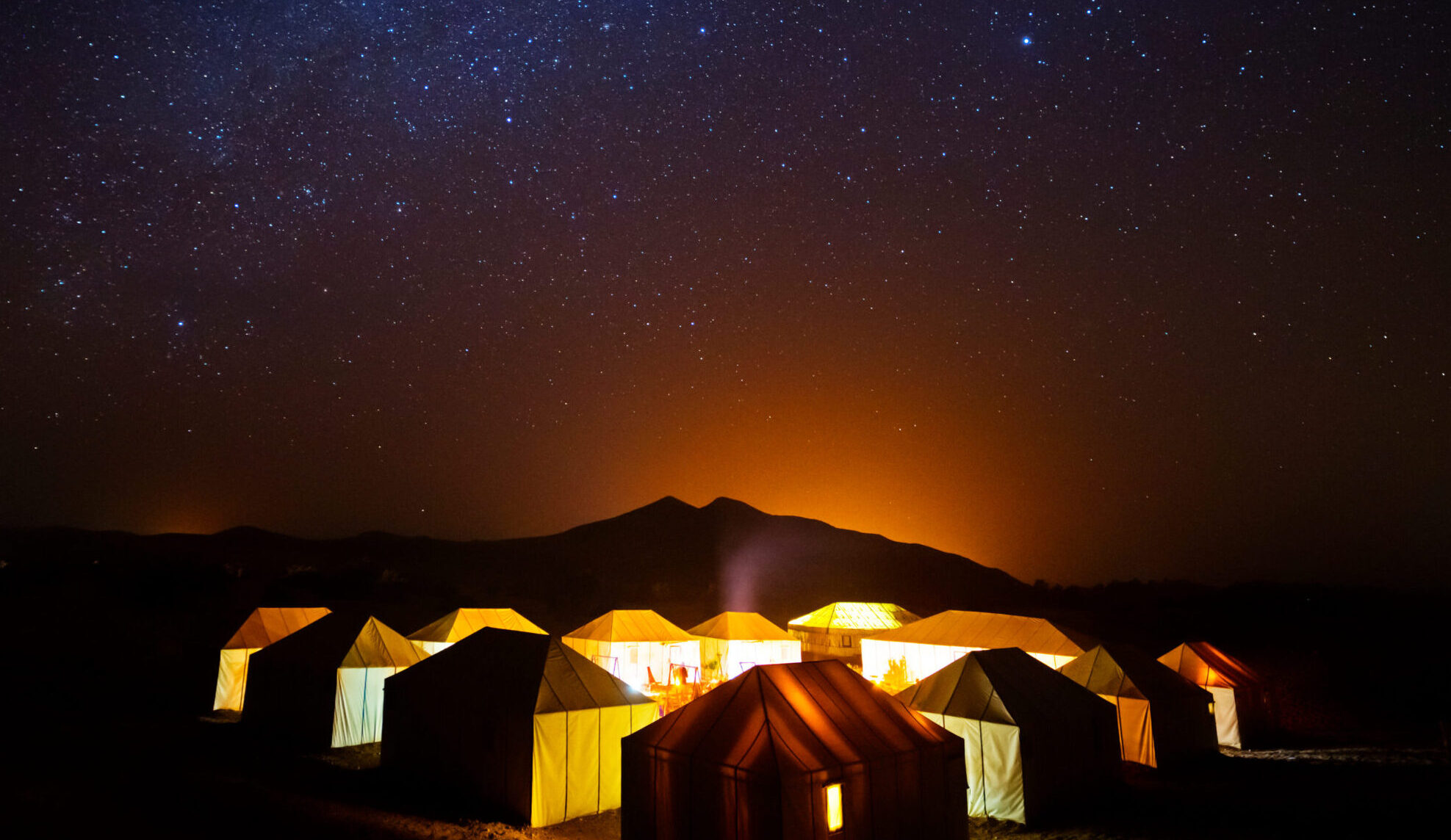
See the sunrise on camelback
As the first blush of sunrise spills across the Sahara’s endless dunes, your camel’s quiet, deliberate steps are the only sound in the morning stillness. The desert, bathed in amber and rose light, feels otherworldly, like a dream slowly unfolding beneath your feet. You let the silence wash over you, and trust in your surefooted companion.
There’s an art to riding a camel: move gently, speak softly, and let the guide lead. These proud, curious creatures respond best to calm energy. Breathe deep, and keep your movements smooth. Mounting feels like a slow-motion rollercoaster: a deep lean forward, then back, as the camel rises. You’ve learned to keep your posture relaxed, hands light on the saddle, trusting the animal’s sure-footed grace. A gentle voice from your guide reminds you to lean back slightly as you ascend a dune, and to let the camel do the work.
The cool desert air carries a faint scent of sand and distant campfires, and the horizon glows in shades of amber, rose, and gold. Around you, the landscape stretches in all directions like an ocean of soft waves, untouched and ancient.

Feel the thrill in a 4×4
You strap in, hold tight and get ready for the ride of a lifetime. Traversing the golden waves of the Sahara in a 4×4 is equal parts adrenaline and awe. Your vehicle climbs steep dunes with a roar, then crests the peak and drops into the valley below like a rollercoaster set to the rhythm of the desert. Through the dust-streaked windows, the Sahara unfurls in every direction like a living canvas: sweeping ridgelines sculpted by centuries of wind, pale tamarisk trees dotting the landscape like brushstrokes, and distant mirages shimmering under the sun. Every now and then, you’ll pass a solitary goat herder or a nomad camp nestled between the dunes, quiet reminders that this wilderness is far from empty.
This is the desert at its most cinematic: golden light dancing off rippling sand, and the sky impossibly wide. Make sure to keep your camera close and your eyes wide open.
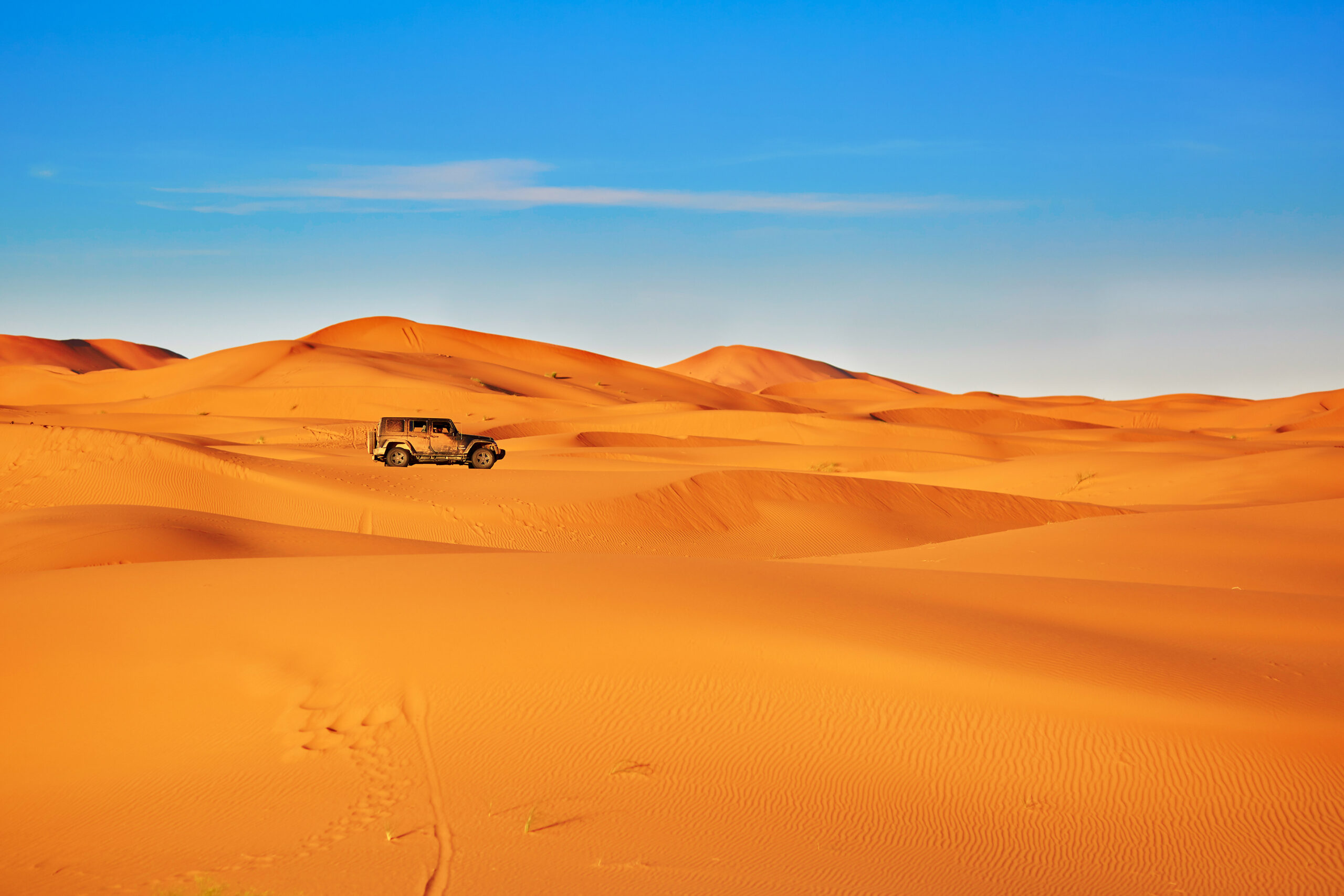
Experience the endless beauty of the Sahara on tour!
Colours of Morocco
The vibrant contrast of the orange clay architecture against electric blue skies will draw you further into the lively yet ancient culture of this modern kingdom. Marvel at the splendour of royal palaces, coastal havens, lavish Riads, disorientating souk streets, and local artisanry. Savour local cuisines, both unexpected and familiar. Venture through the Merzouga desert on camel back, knowing that a unique and restful night under the stars of the Sahara awaits.
Departures: October 2025April 2026September & October 2026 (+$100)
